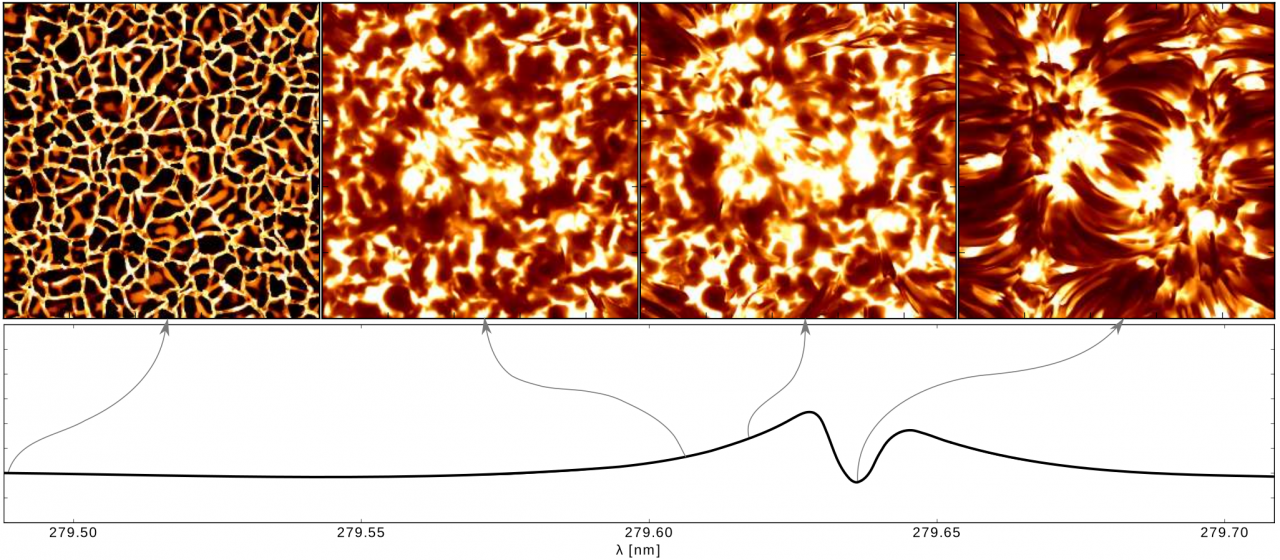General
Los campos magnéticos están presentes en todos los plasmas astrofísicos y controlan la mayor parte de la variabilidad que se observa en el Universo a escalas temporales intermedias. Se encuentran en estrellas, a lo largo de todo el diagrama de Hertzsprung-Russell, en galaxias, e incluso quizás en el medio intergaláctico. La polarización de la luz proporciona la fuente más fiable de información para la teledetección de campos magnéticos en Astrofísica, incluyendo los campos magnéticos del Sol. En particular, el diagnóstico de campos magnéticos en las atmósferas del Sol y de otras estrellas requiere de la medida e interpretación física de señales de polarización en líneas espectrales, las cuales son inducidas por varios mecanismos físicos que operan a las escalas atómicas. Además del efecto Zeeman, hay muchos otros mecanismos físicos que producen polarización en la radiación electromagnética. Por ejemplo, la polarización de los niveles atómicos o moleculares inducida por el bombeo óptico de un campo de radiación anisótropo, la interferencia cuántica entre niveles de estructura fina o hiperfina, el efecto Hanle, etc. La polarización generada por tales mecanismos es sensible a las condiciones físicas del plasma astrofísico en consideración y, en particular, a la presencia de campos magnéticos en un rango de intensidades que va desde valores tan bajos como 1 microgauss hasta varios miles de Gauss.
El principal objetivo de este proyecto es explorar, en profundidad, la física y el origen de la radiación polarizada en plasmas astrofísicos, así como su utilidad como medio de diagnóstico para descifrar y entender la actividad magnética en Astrofísica, con énfasis en el magnetismo de la atmósfera solar. Nuestras investigaciones involucran:
- la física de la polarización, lo que requiere profundizar en la teoría cuántica de la interacción radiación-materia, teniendo en cuenta procesos de dispersión en presencia de campos magnéticos y eléctricos.
- el desarrollo de técnicas de diagnóstico de plasmas para la exploración de campos magnéticos en Astrofísica, con particular interés en descifrar el complejo magnetismo de la atmósfera solar, envolturas circunestelares y nebulosas planetarias.
- observaciones espectropolarimétricas y su interpretación en términos de modelos físicos.
- desarrollo de métodos numéricos para la solución de problemas de transporte radiativo sin suponer equilibrio termodinámico local, con aplicaciones a modelos tri-dimensionales de atmósferas estelares resultantes de simulaciones magneto-hidrodinámicas.
- espectroscopia y espectropolarimetría atómica y molecular, con aplicaciones en varios campos de la Astrofísica.
Este Proyecto está formado por un grupo de científicos convencidos de la importancia de complementar investigaciones teóricas, observacionales e instrumentales para hacer frente a algunos de los retos actuales de la Astrofísica.
Miembros
Resultados
- Hemos aplicado técnicas de aprendizaje profundo al análisis de observaciones. Utilizando redes neuronales convolucionales, hemos desarrollado técnicas para la deconvolución de observaciones. Estas técnicas fueron también utilizadas en el proceso de deconvolución de observaciones en Tierra, consiguiendo una cadencia de unas cien imágenes procesadas por segundo.
- Hemos desarrollado una técnica de inferencia bayesiana para interpretar las observaciones proporcionadas por el experimento internacional CLASP. Parametrizando un modelo magneto-hidrodinámico de vanguardia de la atmósfera solar encontramos que la complejidad geométrica de la región de transición debe ser mucho mayor que la que se encuentra en el modelo.
- Hemos resuelto el problema de la propagación de radiación polarizada en simulaciones de magneto-convección con acción dinamo local para la línea de Sr I en 460.7nm. Encontramos que el modelo con la mayor parte de la zona de convección con magnetización cercana a la equipartición y con campo superficial promedio de 170G es compatible con las observaciones disponibles.
- Hemos estudiado la sensibilidad magnética de la línea de Ca I en 422.7nm. La polarización lineal en el centro de la línea es sensible al efecto Hanle, mientras que en las alas es sensible a efectos magneto-ópticos como consecuencia de la acción conjunta de la redistribución parcial y el efecto Zeeman, un mecanismo encontrado recientemente.
- Hemos estudiado la formación de las líneas H-alfa, Mg II h-k y Ca II H-K y 854.2nm en un modelo de región bipolar explosiva, resolviendo el problema de transporte de radiación teniendo en cuenta redistribución parcial en geometría 3D y fuera del equilibrio termodinámico local. Conseguimos reproducir características propias de las observaciones de estas regiones.



